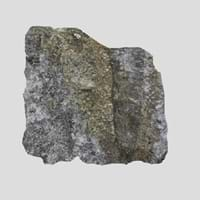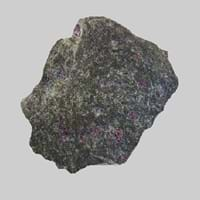Definition
Marl is an unconsolidated sedimentary rock consisting of clay and lime
Peridotite is a dense, coarse-grained plutonic is the main constituent of the earth's mantle
Origin
Unknown
Pike County, U.S
Discoverer
Unknown
Unknown
Etymology
From Old French marle, from Late Latin marglia
From French, from peridot + -ite
Class
Sedimentary Rocks
Igneous Rocks
Sub-Class
Durable Rock, Soft Rock
Durable Rock, Medium Hardness Rock
Group
Not Applicable
Plutonic
Other Categories
Fine Grained Rock, Opaque Rock
Coarse Grained Rock, Opaque Rock
Texture
Earthy
Phaneritic
Color
Beige, Brown, Green, Grey, White
Dark Greenish - Grey
Durability
Durable
Durable
Appearance
Rough and Dull
Rough and Shiny
Interior Uses
Decorative Aggregates, Floor Tiles
Decorative Aggregates, Interior Decoration
Exterior Uses
As Building Stone, Roof Tiles
As Building Stone, As Facing Stone, Garden Decoration
Other Architectural Uses
Curbing
Curbing
Construction Industry
Cement Manufacture, Construction Aggregate, for Road Aggregate, Making natural cement, Raw material for the manufacture of mortar
As Dimension Stone, Cobblestones
Medical Industry
Not Yet Used
Not Yet Used
Antiquity Uses
Artifacts, Jewellery, Sculpture, Small Figurines
Monuments, Sculpture, Small Figurines
Commercial Uses
Creating Artwork, Soil Conditioner
Creating Artwork, Gemstone, Jewelry, Source of Chromite, Platinum, Nickel and Garnet, Source of Diamonds
Types
Clay Marl ,Blue Marl, Red Marl, High Bank Marl, Shell Layer Marl, Under Shell Layer Marl, Sand Marl, Green Marl, Grey Marl and Clayey Marl
Dunite, Wehrlite, Harzburgite, Lherzolite and Pyrolite
Features
Generally rough to touch, Is one of the oldest rock, Splintery, Very fine grained rock
Constitutes upper part of the Earth's mantle, Generally rough to touch, Host rock for Diamond, Is one of the oldest rock
Archaeological Significance
Monuments
Not Yet Used
Used
Famous Monuments
Not Applicable
Data Not Available
Famous Sculptures
Data Not Available
Data Not Available
Formation
Marl forms when very fine-grained clay particles are deposited in water which settles at the bottom of water bodies and are compacted by overlying sediment; the water squeezes out and hence forming Marl rock.
Peridotites can be formed in two ways: as mantle rocks formed during the accretion and differentiation of the Earth or as cumulate rocks formed by precipitation of olivine and pyroxenes from basaltic magmas.
Mineral Content
Calcite, Clay, Dolomite, Gypsum, Micas, Pyrite, Quartz
Amphibole, Chromite, Garnet, Magnesium, Olivine, Phlogopite, Plagioclase, Pyroxene
Compound Content
Aluminium Oxide, NaCl, CaO, Iron(III) Oxide, Silicon Dioxide
Ca, Fe, Mg, Potassium, Silicon Dioxide, Sodium, Titanium Dioxide
Types of Metamorphism
Not Applicable
Burial Metamorphism, Cataclastic Metamorphism, Contact Metamorphism, Hydrothermal Metamorphism, Impact Metamorphism, Regional Metamorphism
Types of Weathering
Biological Weathering, Chemical Weathering
Biological Weathering, Chemical Weathering, Mechanical Weathering
Types of Erosion
Chemical Erosion, Coastal Erosion, Water Erosion, Wind Erosion
Chemical Erosion
Grain Size
Very fine-grained
Coarse Grained
Fracture
Conchoidal
Irregular
Porosity
Highly Porous
Less Porous
Compressive Strength
Not Available
Cleavage
Not Available
Imperfect
Specific Gravity
2.2-2.8
3-3.01
Transparency
Opaque
Translucent to Opaque
Density
2.4-2.8 g/cm3
3.1-3.4 g/cm3
Specific Heat Capacity
Not Available
Resistance
Heat Resistant, Impact Resistant
Heat Resistant, Pressure Resistant, Wear Resistant
Deposits in Eastern Continents
Asia
India, Pakistan, Russia
China, India, Indonesia, Kazakhstan, Russia, South Korea, Thailand, Turkey
Africa
Ethiopia, Kenya, Morocco, South Africa
Morocco, South Africa
Europe
Austria, France, Germany, Greece, Italy, Romania, Scotland, Spain, Switzerland
Finland, France, Georgia, Germany, Great Britain, Italy, Kazakhstan, Netherlands, Norway, Spain, Switzerland, Venezuela
Others
Not Yet Found
Not Yet Found
Deposits in Western Continents
North America
USA
Canada, USA
South America
Colombia, Ecuador, Peru
Brazil
Deposits in Oceania Continent
Australia
New South Wales, Victoria, Western Australia
New Zealand, Western Australia
Marl vs Peridotite Characteristics
Though some rocks look identical, they have certain characteristics which distinguish them from others. Characteristics of rocks include texture, appearance, color, fracture, streak, hardness etc. Marl vs Peridotite characteristics assist us to distinguish and recognize rocks. Also you can check about Properties of Marl and Properties of Peridotite. Learn more about Marl vs Peridotite in the next section. The interior uses of Marl include Decorative aggregates and Floor tiles whereas the interior uses of Peridotite include Decorative aggregates and Interior decoration. Due to some exceptional properties of Marl and Peridotite, they have various applications in construction industry. The uses of Marl in construction industry include Cement manufacture, Construction aggregate, For road aggregate, Making natural cement, Raw material for the manufacture of mortar and that of Peridotite include As dimension stone, Cobblestones.
More about Marl and Peridotite
Here you can know more about Marl and Peridotite. The life cycle of a rock consists of formation of rock, composition of rock and transformation of rock. The composition of Marl and Peridotite consists of mineral content and compound content. The mineral content of Marl includes Calcite, Clay, Dolomite, Gypsum, Micas, Pyrite, Quartz and mineral content of Peridotite includes Amphibole, Chromite, Garnet, Magnesium, Olivine, Phlogopite, Plagioclase, Pyroxene. You can also check out the list of all Sedimentary Rocks. When we have to compare Marl vs Peridotite, the texture, color and appearance plays an important role in determining the type of rock. Marl is available in beige, brown, green, grey, white colors whereas, Peridotite is available in dark greenish - grey colors. Appearance of Marl is Rough and Dull and that of Peridotite is Rough and Shiny. Properties of rock is another aspect for Marl vs Peridotite. The hardness of Marl is 2-3 and that of Peridotite is 5.5-6. The types of Marl are Clay Marl ,Blue Marl, Red Marl, High Bank Marl, Shell Layer Marl, Under Shell Layer Marl, Sand Marl, Green Marl, Grey Marl and Clayey Marl whereas types of Peridotite are Dunite, Wehrlite, Harzburgite, Lherzolite and Pyrolite. Streak of rock is the color of powder produced when it is dragged across an unweathered surface. The streak of Marl and Peridotite is white. The specific heat capacity of Marl is Not Available and that of Peridotite is 1.26 kJ/Kg K. Depending on the properties like hardness, toughness, specific heat capacity, porosity etc., rocks are resistant to heat, wear, impact, etc.Marl is heat resistant, impact resistant whereas Peridotite is heat resistant, pressure resistant, wear resistant.





